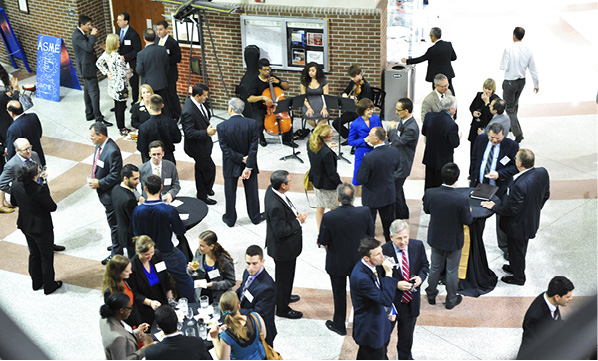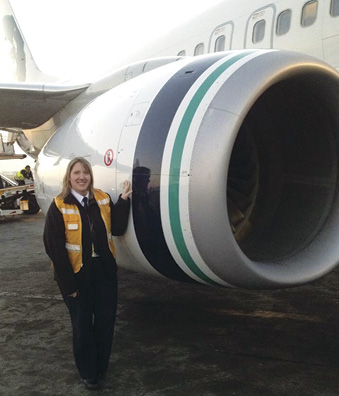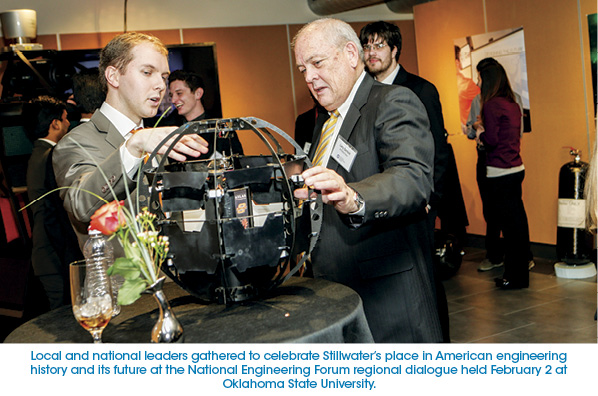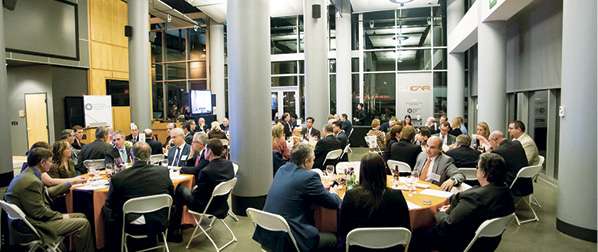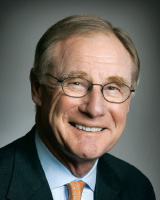Building the Future
 Erica Stanley is a software architect and engineer, and the founder and director of the Atlanta network of Women Who Code. In this interview, which appeared in the September edition of the National Engineering Forum newsletter, the NEF asked Ms. Stanley what she sees happening in tech and how engineers can help America stay competitive in the global economy.
Erica Stanley is a software architect and engineer, and the founder and director of the Atlanta network of Women Who Code. In this interview, which appeared in the September edition of the National Engineering Forum newsletter, the NEF asked Ms. Stanley what she sees happening in tech and how engineers can help America stay competitive in the global economy.
Q: You’re an IoT expert. As we see more consumer acceptance and integration of connected things in the home—thermostats, alarm systems and refrigerators—how do you think the Internet of Things will impact technology and society over the next several years?
As we continue to build up the Internet of Things, incorporating more connected devices and apps, I believe we’re moving toward our own digital ecosystem—an ecosystem that’s always aware and ready to respond to subtle changes in our environment. For instance, we might have temperature settings that follow us from our home to car to our office and seats, whether in our car, home, or office, that respond to our personal posture needs.
I think technology will evolve in a few different ways. I think our interaction with devices will change from mostly touch-based systems to more organic interaction like voice and gesture control. Big data coupled with machine learning will begin to drive the predictive nature of many of our devices. This means a lot of the actions we now complete through some direct interaction will soon be handled automatically, as the devices in our ecosystem learn more about us. Traditionally, the skill set for hardware and software engineers has been very different. They typically worked separately, on completely different teams. But soon, I think we will start to see more hybrid software/hardware engineers and technical leaders. We’ll start to see hardware and software engineers collaborating more closely together as the hardware and software requirements for connected devices become more intertwined.
Socially, with so much of our personal information being gathered, the expectations around personal privacy will change. Also, I believe that IoT has the ability to empower us physically, to allow us to take more control of our physical health and capabilities. We’ve already started to see this trend in fitness devices and apps. But I expect to see us control other areas of our health with connected devices. For instance, there are several devices in the works that will help continuously monitor and communicate blood sugar changes. This has obvious implications for diabetics and pre-diabetics, but also athletes and anyone who is concerned with physical performance and weight loss. I think there are also opportunities to enhance physical capabilities with connected devices, bringing new opportunities to the physically disabled.
Q: How do you approach developing a new app or software solution?
I like to incorporate elements of design thinking from the very beginning, and I typically take an agile approach to building the solution. If the project is for a client, I like to work very closely with the client and the team (developers, designers, UX, Bas, PMs, etc.) together so that the entire team understands the problem, understands any tradeoffs, and can collaborate on the solution. Then we go through a few rounds of rapid prototyping, whether it’s a wireframe, comps, or a clickable prototype and work through them iteratively with the client.
If it is a more personal entrepreneurial venture, we would start with customer discovery to make sure we understand the customer and the market, then begin a process that more closely resembles a design sprint to determine what our Minimum Viable Product (MVP) should include.
The end result from either process is a vetted prototype that we can use to begin developing a roadmap through user story mapping. Once we have detailed user stories and other artifacts like acceptance criteria, we work the plan, building the solution one sprint at a time. We use the retrospective of each sprint as an opportunity to engage the client and revisit our goals to make sure we’re building the right solution at each iteration.
Q: Why is it important for engineers to take the time to mentor the next generation?
I can speak from personal experience, as mentoring has played a huge role in the course of my career. I was interested in technology early, but growing up, I had no idea how to turn it into a career, or even if I wanted to turn it into a career. Mentors definitely helped me map my career in tech. This mentor relationship is going to be even more important to the next generation of engineers because we have so many people entering tech from non-traditional means. We see many people opting to forgo university education and instead picking up technical skills via code schools and boot camps. Without the guidance, mentoring, and community building that takes place for university students, these new developers can easily become isolated, discouraged, and confused about their goals in tech. It will take established engineers working with these new developers to build the basics of tech talent needed to keep us competitive in this ever-growing technical landscape.
Q: Tell us how groups like Women Who Code and 100 Girls of Code are important to everyone in STEM fields, not just women and girls.
At Women Who Code, we work to help women excel in technical careers. At 100 Girls of Code, our goal is to introduce girls ages 8-18 to technology in new and creative ways. These organizations, and organizations like them, provide the network, the support, and resources for members of marginalized groups to find their place in tech. We should all want more diverse teams in tech, because diverse teams build better products. They’re more collaborative and innovative. They also have the benefit of finding unique problems to solve and creative ways to solve them, as a result of having more varied perspectives at the table.
Also, we are starting to see a shortage of skilled engineers. By 2020, we will have 1.6 million more tech jobs than computer science graduates. We’ll have to do things differently to fill this need. That includes finding ways to appeal to women and minorities, to bring more people, perspectives, and ideas to tech. That includes growing and mentoring engineers that may have taken a non-traditional path into tech. Working with Women Who Code has allowed me to work closely with local companies and organizations, engaging the Atlanta tech community in changing our approach to diversity and inclusion.
#Enspiration
NEF’s newest homage to the American engineer on social media is the hashtag #enspiration. It celebrates the art and beauty of everything we engineer. Post your #enspiration photos to celebrate how engineering makes a difference, and help make engineering more visible on social media.
The information above was published with permission from NEF, which brings together leaders concerned about the sustainability of engineering in the United States and the impact on the nation’s security and prosperity. NEF involves industry executives, academics, policymakers, media, engineering societies, and nonprofits to develop solutions to the challenges facing the U.S. engineering enterprise. For more information, contact by phone: 202-969-3410, by email: info@nationalengineeringforum.com, or on the web: www.nationalengineeringforum.com.
Photo by Lynsey Weatherspoon Photography

